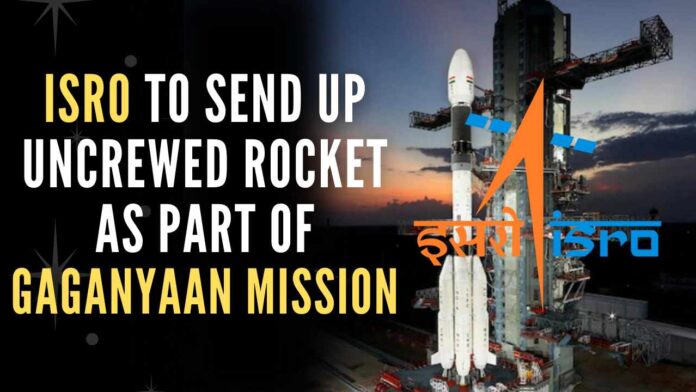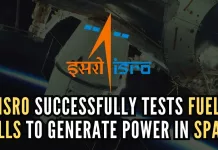
ISRO is buzzing; unmanned test mission in Feb 2024
The Indian space agency ISRO will launch the first uncrewed test rocket Geosynchronous Satellite Launch Vehicle (GSLV) as a part of the Gaganyaan Mission – India’s human space mission.
The Chairman of the Indian Space Research Organization (ISRO) S Somanath said that the space agency is planning to send up the first uncrewed GSLV rocket in February 2024 as part of the Gaganyaan Mission. The human module will land in the sea.
He was speaking to reporters here after the successful launch of two Singaporean satellites – TeLEOS-2 and Lumilite-4, with the rocket Polar Satellite Launch Vehicle (PSLV).
Somanath said prior that there will be a test of the Gagayaan Mission in June this year where the rocket will go up to 12-14 km and test its safety systems.
Queried about the next step in ISRO developing a reusable rocket – similar to the USA’s Space Shuttle, Somanath said the space agency would send up an Orbital Recovery Vehicle. The vehicle will be in the space for some days and come back.
On forthcoming space missions of ISRO, he said the space agency would send the Aditya L1, Navigation satellites, a commercial launch with the heavier rocket GSLV and a mission with Small Satellite Launch Vehicle (SSLV).
According to D Radhakrishnan, Chairman and Managing Director of NewSpace India Ltd (NSIL) – the commercial arm of the Department of Space, there is an emerging demand for SSLV rocket for orbiting small satellites.
Similarly after the successful launch of 72 OneWeb satellites – for a fee of over Rs.1,000 crore – with ISRO’s LVM3 rocket, there is good business potential for that rocket as well, Radhakrishnan said.
He said the NSIL is planning to build communication satellites and launch the same.
Be that as it may, speaking about Saturday’s successful PSLV rocket mission, Somanath said the space agency did some re-engineering to cut costs without compromising its performance.
The ISRO officials are also upbeat about using the PSLV rocket’s upper stage as a stabilized orbital platform on which small payloads are fitted to carry out experiments.
The upper stage of the PSLV-C55 rocket that went up on Saturday had seven experimental payloads.
According to M Sankaran, Director, U R Rao Satellite Centre (URSC), the thought of using the upper stage came four years ago as it will be in space for a long time.
Sankaran said the space agency took steps to stabilize the upper stage in space and then upgraded the same.
Somanath said commercial electronics are used in the upper stage to make it an orbital platform and hence its life span will be short.
[With Inputs from IANS]
PGurus is now on Telegram. Click here to join our channel and stay updated with all the latest news and views
For all the latest updates, download PGurus App.
- ED grills AAP legislator Amanatullah Khan in Delhi Waqf Board case - April 18, 2024
- DRDO successfully flight tests indigenous cruise missile - April 18, 2024
- ED attaches assets worth over Rs.97 cr of Raj Kundra, Shilpa Shetty in Bitcoin scam case - April 18, 2024











Best wishes to ISRO team for their efforts. India will match NASA in space though it is short of funds. ISRO will be a successful this time.